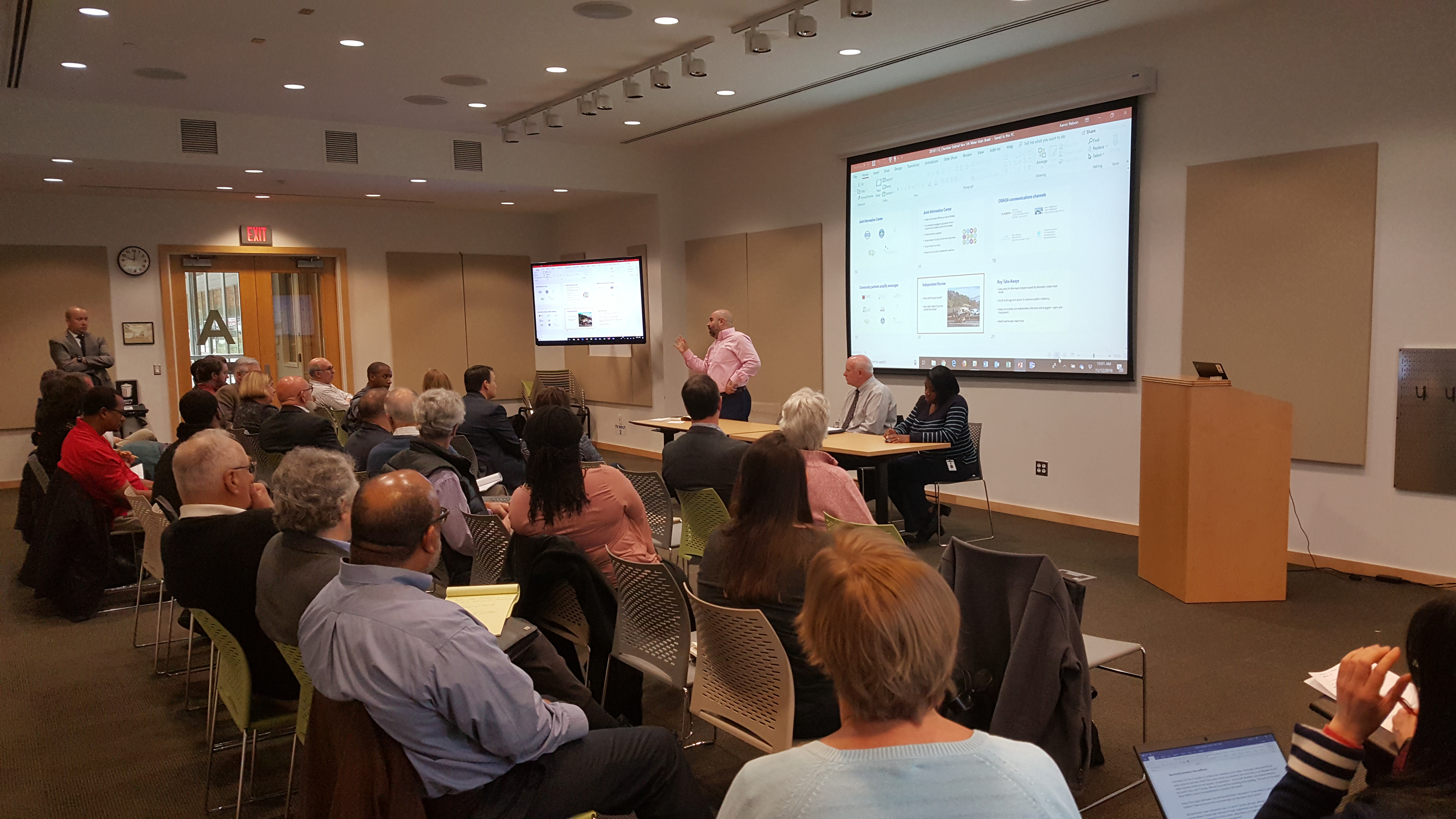What happened and where do we go from here?: The 2018 Water Emergency

What happened and where do we go from here?: The 2018 Water Emergency
The water emergency last week (11/05/18) included a water main break on Jones Ferry Road, a subsequent 24-hour water conservation order, and a 30-hour boil order. This emergency and the 30-hour response had substantial negative impact on our local business community, the university, and the health care system.
This morning, the Chapel Hill-Carrboro Chamber of Commerce convened a meeting with OWASA leadership as well as local health department and emergency management professionals to discuss what happened and hear feedback from the business community.
Note - Chapel Hill and Carrboro's public water is managed by a community-owned, non-profit agency called the Orange Water and Sewer Authority (OWASA), which also provides sewer (wastewater) and reclaimed water services.
OWASA CEO Ed Kerwin briefed the Chamber members on the details of the emergency, including what happened, the response, and next steps. View the power point presentation.
A candid conversation with the business community followed and the discussion circled on three main themes: The impact of the emergency, the need for greater resiliency in our water system, and the role of communications in times of disaster.
I. Impact
The impact of the water emergency was felt acutely at UNC hospitals, which has services ranging from dialysis, transplants, and pediatric care to a burn center. The water emergency resulted in full diversion (no ambulances to UNC hospital).
The university and the hospital are assembling economic impact reports, with early estimates exceeding many millions of dollars.
Downtown businesses articulated a negative impact from the emergency, including lost revenues from the unexpected decline in shoppers and an increase in costs for preparing foods with bottled waters.
______________________________________________
Several meeting participants acknowledged improved OWASA communications (frequency) in comparison to the previous emergency in 2017, and also suggested more clarity and precision in messaging going forward (ie: use plain language that addresses business owners’ unique and practical questions). Further, participants requested more predictability in future messaging as it would help local businesses, particularly restauranteurs and hoteliers, determine next day operation plans.
CBS 17 Investigative Reporter Richard Essex covered the ongoing discussions with the following package: "What leaders are doing to prevent incidents like OWASA's water main break from reoccurring."
This morning, the Chapel Hill-Carrboro Chamber of Commerce convened a meeting with OWASA leadership as well as local health department and emergency management professionals to discuss what happened and hear feedback from the business community.
Note - Chapel Hill and Carrboro's public water is managed by a community-owned, non-profit agency called the Orange Water and Sewer Authority (OWASA), which also provides sewer (wastewater) and reclaimed water services.
OWASA CEO Ed Kerwin briefed the Chamber members on the details of the emergency, including what happened, the response, and next steps. View the power point presentation.
A candid conversation with the business community followed and the discussion circled on three main themes: The impact of the emergency, the need for greater resiliency in our water system, and the role of communications in times of disaster.
______________________________________________
I. Impact
The impact of the water emergency was felt acutely at UNC hospitals, which has services ranging from dialysis, transplants, and pediatric care to a burn center. The water emergency resulted in full diversion (no ambulances to UNC hospital).
The university and the hospital are assembling economic impact reports, with early estimates exceeding many millions of dollars.
Downtown businesses articulated a negative impact from the emergency, including lost revenues from the unexpected decline in shoppers and an increase in costs for preparing foods with bottled waters.
______________________________________________
II. Resiliency
A main thread of the conversation had to do with questions of system vulnerability and the need for a future in which a singular pipe break does not take down the entire system.
Participants encouraged OWASA leadership to think differently about the system and better incorporate resiliency into the strategic plans and priorities.
Also, participants asked OWASA leadership to consider for themselves if our system is indeed capable of meeting continuity-of-service needs for a community with a top tier hospital and unversity. If resiliency is indeed an issue, then a discussion must follow on if/how our service area could become a part of a larger, inter-connected system that can adequately meet water reliability and delivery expectations.
Participants encouraged OWASA leadership to think differently about the system and better incorporate resiliency into the strategic plans and priorities.
Also, participants asked OWASA leadership to consider for themselves if our system is indeed capable of meeting continuity-of-service needs for a community with a top tier hospital and unversity. If resiliency is indeed an issue, then a discussion must follow on if/how our service area could become a part of a larger, inter-connected system that can adequately meet water reliability and delivery expectations.
______________________________________________
III. Communications
Several meeting participants acknowledged improved OWASA communications (frequency) in comparison to the previous emergency in 2017, and also suggested more clarity and precision in messaging going forward (ie: use plain language that addresses business owners’ unique and practical questions). Further, participants requested more predictability in future messaging as it would help local businesses, particularly restauranteurs and hoteliers, determine next day operation plans.
_____________________________________________
The meeting concluded at 10:20am with OWASA leadership expressing an appreciation for the feedback from the business community and a willingness to work together to make the system more resilient.
______________________________________________
CBS 17 Investigative Reporter Richard Essex covered the ongoing discussions with the following package: "What leaders are doing to prevent incidents like OWASA's water main break from reoccurring."
Images

Powered By GrowthZone

